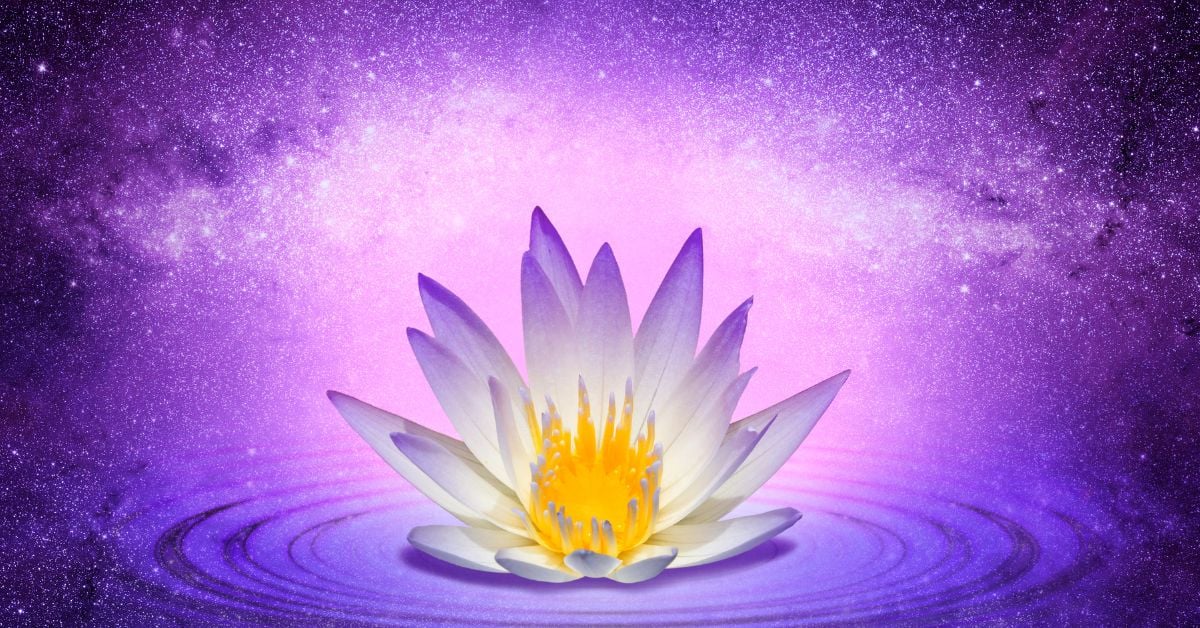
Hinduism: Our Purpose is Spiritual Growth
I could give you the history of Hinduism. How it is considered the world’s oldest religion, beginning at least 1500 years before the Common Era, at least 1500 years before Jesus, but probably longer. I could tell you that it consists of a myriad of gods and goddesses, a myriad of traditions and rituals, a myriad of theologies, stories, scripture, ideologies all grouped under one label. I could even explain that it is unique among world religions because as it grew and evolved, rather than becoming more rigid and defined, it remained able to merge in new deities and religious practices, yet maintain the clear understanding that there is only ONE divine essence that underlies all things.
But what I want to talk about most is something that I find compelling in Hinduism that I find lacking in Christianity.
In Hinduism, as I see it, the purpose and goal of each human being is to grow spiritually. By this I mean becoming one with the Divine, recognizing our own divine nature, and surrendering to it, letting go of our ego, recognizing the illusions of permanence that surround us, so as to be liberated from the cycle of birth, death and reincarnation. This intentional spiritual growth can be found in their daily practices, in their stories and in their scripture.
While Jesus certainly emphasized spiritual growth, becoming one with the divine and not getting caught up in things of the world, Christianity (until somewhat recently, and only then in some denominations or churches) has not done a good job of encouraging people to look within. Christianity has emphasized belief over inner transformation, practice over relationship with God.
This misplaced emphasis on what you believe and what you do always places answers outside of ourselves instead of inside.
And, besides, Marcus Borg once said, “you can believe all the right things and still be a jerk.”
The key for Hindus is personal spiritual growth, looking inward and discovering a transcendent reality within.
In the Upanishads there is a story of a father who is teaching his 24-year-old son the knowledge of the unknowable, about the Supreme Being.
He says to his son, “… bring a fruit of that Nyagrodha tree.”
“Here it is, sir.”
“Break it.”
It is broken, sir.”
“What do you see?”
“Some seeds extremely small, sir.”
“Break one of them.”
“It is broken, sir.”
“What do you see?”
“Nothing, sir.”
“The subtle essence you do not see, and in that is the whole of the Nyagrodha tree. Believe, my son, that that which is the subtle essence – in that have all things their existence. That is the truth. That is the Self. And that, my son, That art thou.”
As I considered spiritual growth and improving our nature to be the path of Hinduism, I looked at their practices with a different, deeper, perspective. In many different places I found the intention to look beyond the distractions of the world and remember who we are.
Namaste
Namaste, in essence, means "The Divinity within me perceives and adores the Divinity within you." In this simple daily greeting lies a constant reminder that we (and everyone else) are more than we appear to be. We all have a spark of the divine within us, we are all called to remember this and to recognize it within ourselves and others.
Yoga
Hindus have four different yogic paths, or spiritual practices, designed to aid four different personality types to grow spiritually. Each practice clears the head, releases one's hold on ego, helps to develop a level of detached awareness, and therefore liberation from the self and a deeper connection with Absolute Reality.
Kolams
In Northern India women draw a mandala on the ground each morning, this is called a Kolam and is created to bring good fortune and protection to home, family, or harvest. Chalk powder, grain, or flower petals are used to create mandala designs that usually decorate front steps, threshold, porches or sometimes the walls of a home or building. Sometimes rice flour is used so that insects will feed on it fulfilling the injunction to “feed 1,000 souls every day.”
This ritual is not only meditative and prayerful, it also reminds them every day that things in life aren’t permanent, and encourages letting go.
Karma
Karma says that “what goes around, comes around.” Every act, even every thought and desire, shapes our future experiences. Our life is what we have made it and we are shaped by what we have done. I think we can all relate to the fact that if we do good things with positive energy, we will draw positivity back to us. But if we dwell in the negative, if we act selfishly, if we don’t care about others, we will find that same energy directed back to us. Hinduism says that at the end of your lifetime, your accumulated good and bad karma is weighed to determine what or who you will return as in the next life. Birth as a human being is considered a precious and rare opportunity for the soul to grow, to advance toward its goal of being liberated from this cycle of samsara (birth-death-rebirth) by reaching enlightenment and merging with Absolute Reality. This is a very long process and can take many, many lifetimes.
Puja
Daily devotion to a deity. Most Hindus have a shrine at home with pictures or small statues of various deities. Or perhaps they have a prayer room set aside for worship. A picture of a guru may also be present. The intent is - through surrendering in deep love and affection for a god or goddess - to develop a higher consciousness and awareness of the divine within oneself as well as within others.
Hindu temples consist of a large room with many small shrines to different gods/goddesses. People will remove their shoes and visit different shrines, praying and leaving offerings of food called Prasad. Keep in mind that they are not worshipping idols or pictures or statues, but the underlying essence. They believe they can achieve visual contact with the divine through the eyes of the image. This is called darsan.
Lotus
The lotus is an often used symbol in Hinduism. As you may know, the lotus flower roots in the muck at the bottom of a pond or small body of water, then grows a long stem to rise above the water and bloom. Metaphorically it reminds us that while we must deal with the muck of everyday life, our goal is to rise above it, to see a larger landscape.
In the Rig Veda, there is a story of the god Indra (King of the Gods – god of thunder and welcome rains). Indra was forced by the other gods and goddesses to descend to earth in the body of a boar. Once there, he began to enjoy the life, wallowing in the mud, mating, and siring baby pigs. The gods and goddesses were horrified; they came down to try to convince him to return, but Indra had forgotten his kingly state and insisted on remaining as a boar. The gods and goddesses tried killing his babies; he was distraught but simply mated to have more piglets. Then the gods and goddesses killed his mate. Indra grieved his loss but stayed in the mud. They finally had to kill him as well to bring him back to his senses. His soul could then see the body of the boar it had been inhabiting and was glad to return to heaven.
The moral is that we, too, are like gods who forget the heights from which we came, so intent are we on the joys and sorrows of earthy life.
Hinduism has a rich tapestry of ritual and tradition that is very different from that of Christianity. But it still draws us back to an important spiritual concept… turning inward to find the divine. Turning inward to look for answers. Working always to grow spiritually, to improve our nature, to live more and more of the divine self we are.
Love & Light!
Kaye



